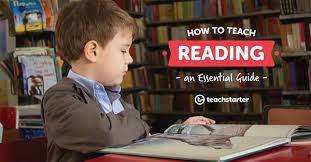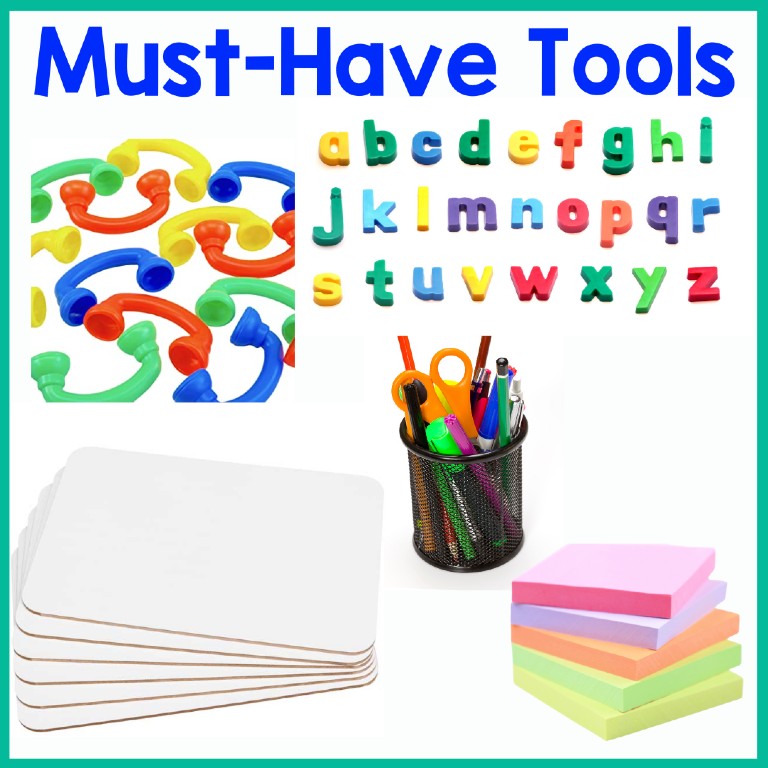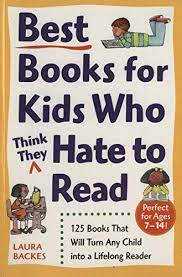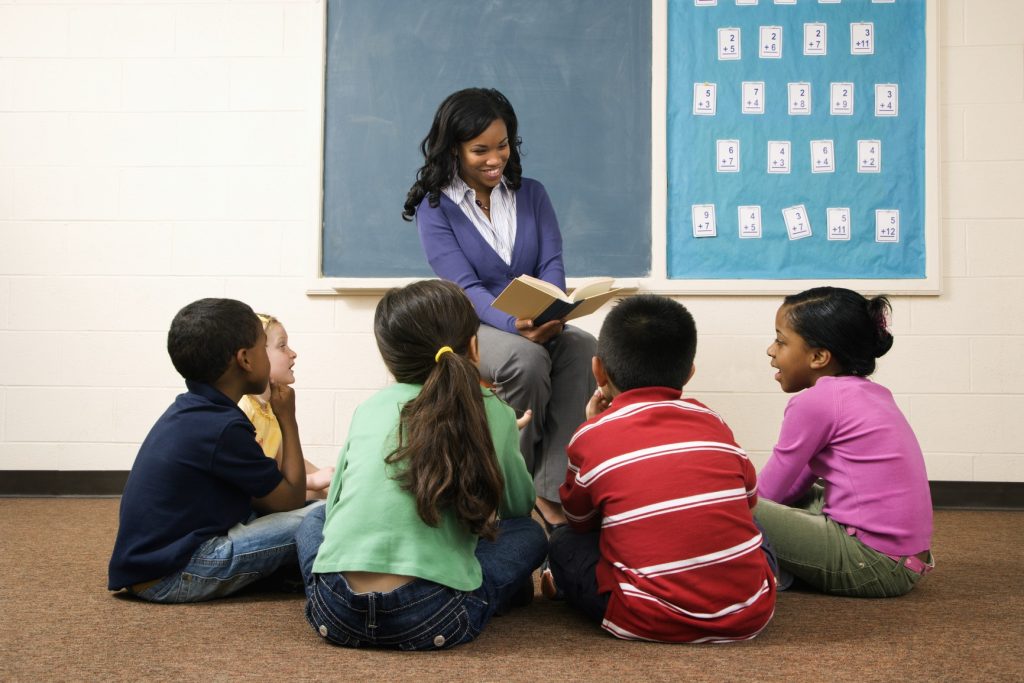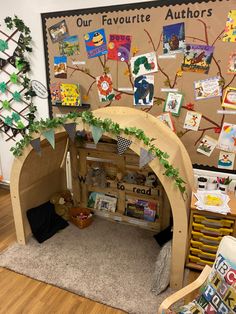Teaching reading is one of the most rewarding challenges that educators and parents can undertake. It is the cornerstone of education and a fundamental skill that unlocks the vast world of knowledge and imagination. Here’s an essential guide to help you navigate the process of teaching reading to children.
Begin with the Basics
Reading begins with understanding the relationship between letters and sounds, known as phonemic awareness. Start by introducing the alphabet and its corresponding sounds through fun activities such as singing alphabet songs, playing phonics games, or using flashcards.
Develop Phonics Skills
Once children recognize letters, focus on phonics—the ability to connect letter symbols with their associated sounds to form words. Utilize workbooks, apps, or engaging online programs that provide systematic instruction in phonics.
Incorporate Plenty of Practice
Practice is crucial in solidifying reading skills. Encourage frequent reading of age-appropriate books. Starting with simple texts helps build confidence as children master basic words before moving on to more complex material.
Focus on Comprehension
Understanding what they read is just as important as the act of reading itself. Ask questions about the story’s characters, settings, and plot to check comprehension and inspire critical thinking.
Make it Enjoyable
Fostering a love for reading from an early age sets the foundation for enthusiastic lifelong readers. Create a cozy reading nook, choose diverse and interesting books, participate in read-aloud sessions, and let children pick books that pique their interest.
Offer Support and Encouragement
Positive reinforcement goes a long way in motivating children. Celebrate small victories and provide gentle guidance through challenges. Avoid criticism that can lead to frustration or reluctance towards reading.
Use Multisensory Approaches
Different children learn best through different senses. Incorporate tactile experiences like tracing sandpaper letters, visual aids like colorful pictures accompanying text, or auditory support like spoken-word recordings.
Be Patient and Consistent
Remember that each child develops at their own pace. Regular practice coupled with patience helps build strong readers over time, not overnight.
Teaching reading is an investment in a child’s future. By employing these strategies consistently and mindfully, you are equipping them with one of life’s most valuable skills.
The Must Have Teaching Tool for Guided Reading
Guided reading is an instructional approach that has transformed how educators teach reading. It allows teachers to work closely with students in small groups, providing tailored instruction that meets each reader at their level. To maximize the effectiveness of guided reading sessions, teachers are turning to one must-have tool: interactive eBook platforms.
Interactive eBook platforms offer a unique combination of features that align perfectly with the goals of guided reading. They present texts suitable for various reading levels and include interactive elements that engage students. Tools such as embedded questions, highlighting capabilities, and voice recording functions help to keep students on track and ensure comprehension.
Moreover, these platforms provide instant access to a vast library of titles across genres and topics, ensuring that teachers can select materials appropriate for each student’s interests and reading level. The personalization aspect is vital in guided reading, where engagement can significantly impact the progress a student makes.
Other features like progress tracking allow teachers to monitor each student’s progress continuously. Teachers can observe which books a student has chosen, how long they spend on each page, and their interactions with the text. This data is invaluable for informing future instruction and providing targeted support where necessary.
Another crucial benefit is accessibility. Interactive eBook platforms can be accessed from any device with an internet connection, be it a computer, tablet or smartphone. This versatility ensures that guided reading can take place in any learning environment – whether in the classroom, at home or on the go.
In conclusion, interactive eBook platforms are revolutionizing guided reading by offering an engaging, personalized, and accessible way to support students’ literacy development. As guided reading continues to evolve, these platforms are fast becoming an indispensable resource in every teacher’s toolkit.
15 Books for Motivating Readers Who “Hate To Read”
Books have the power to inspire, entertain, and educate, but not everyone considers themselves a book lover. However, finding the right book can turn a reluctant reader into an avid one. Here are 15 books across various genres that are perfect for motivating readers who “hate to read”:
1. “The Hunger Games” by Suzanne Collins – This thrilling dystopian novel captures readers with its intense plot and compelling characters.
2. “The Alchemist” by Paulo Coelho – A short, powerful novel about personal dreams and the importance of listening to our hearts.
3. “The Lightning Thief” by Rick Riordan – A modern take on Greek mythology that’s action-packed and humorous.
4. “Persepolis” by Marjane Satrapi – An engaging graphic novel that tells the story of a young girl growing up during the Islamic Revolution in Iran.
5. “Into the Wild” by Jon Krakauer – A fascinating nonfiction account of Christopher McCandless’s adventures in the Alaskan wilderness.
6. “The Curious Incident of the Dog in the Night-Time” by Mark Haddon – A mystery novel through the perspective of a boy with autism spectrum disorder.
7. “Holes” by Louis Sachar – A unique and intriguing story about a boy at a juvenile detention center, weaving history and fate.
8. “The Girl on the Train” by Paula Hawkins – A gripping psychological thriller that keeps readers guessing until the very end.
9. “Bossypants” by Tina Fey – A hilarious and insightful autobiography full of relatable life stories and humor.
10. “The 5th Wave” by Rick Yancey – An apocalyptic tale with numerous plot twists that will hook readers from page one.
11. “Hyperbole and a Half” by Allie Brosh – A comic book filled with uproarious stories about life’s challenges and absurdities.
12. “Life of Pi” by Yann Martel – An adventure novel that explores themes of survival, religion, and human nature through a fantastical tale at sea.
13. “Diary of a Wimpy Kid” series by Jeff Kinney – A fun-filled series told through the diary entries of middle schooler Greg Heffley, resonating with younger readers.
14. “I Am Malala” by Malala Yousafzai – The inspirational true story of a young girl standing up for education against the Taliban.
15. “Ready Player One” by Ernest Cline – A sci-fi adventure that dives deep into virtual reality and 80s pop culture references, captivating gamers and non-gamers alike.
These books were chosen for their ability to engage reluctant readers through compelling stories, relatable characters, or unique formats such as graphic novels or diaries. Whether it’s due to fast-paced plots or thought-provoking themes, each of these books provides an accessible entry point into the world of reading for those who typically shy away from it.
9 Opportunities for Incidental Reading at Home
In the modern home, reading is not just confined to books and screens. Incidental reading refers to the reading we do as part of our everyday activities, often without even realizing it. This type of reading can bolster literacy skills and foster a love for reading in subtle yet significant ways. Here, we explore nine opportunities for incidental reading that can be easily integrated into your daily life at home.
1. Recipe Cards and Cooking Instructions:
The kitchen offers a plethora of reading opportunities. Following a recipe requires reading and comprehending cooking instructions—turning the act of preparing a meal into an educational experience.
2. Game Instructions:
Board games, card games, and even video games come with instructions or background stories that are often read before play. This not only enhances understanding of the game but also builds reading comprehension skills.
3. Grocery Lists and Product Labels:
Writing grocery lists and reading product labels in the pantry provide everyday chances for incidental reading. Comparing nutritional information also introduces an element of analytical reading.
4. Household Chores Checklist:
Whether it’s a cleaning rota or a to-do list, household chore lists involve reading tasks and instructions that contribute to the daily quota of word consumption.
5. Mail and Bills:
Going through the mail, including bills, flyers, and letters, is an activity that involves various levels of incidental reading, often including persuasive texts and informational material.
6. Magazines and Catalogs:
Even if they sit on the coffee table for casual perusal, magazines, catalogs, and brochures are excellent sources of incidental reading that can cater to diverse interests.
7. DIY Instructions:
Home improvement projects require the consultation of instruction manuals or online tutorials—another excellent way to engage in meaningful incidental reading.
8. Calendars and Planners:
Household members naturally read dates, appointments, and reminders on calendars or in planners – keeping track of schedules while engaging with written content.
9. Signs and Posters Around the House:
Whether it’s decorative pieces with quotes or informational signs (like emergency exit plans or Wi-Fi passwords), these texts around the house can encourage habitual readership without much effort.
Through recognizing these incidental opportunities for literacy engagement within your own home environment, you can enhance you and your family’s interaction with the written word which is both constant and constructive.
15 Books for Motivating Readers Who Hate to Read
1.”The Alchemist” by Paulo Coelho – This inspirational novel follows the journey of Santiago, a shepherd who dreams of finding a worldly treasure. Its simple language and profound message motivate readers to pursue their dreams.
2.”The Life-Changing Magic of Tidying Up” by Marie Kondo – A non-fiction guide that inspires readers to declutter their physical and mental spaces, potentially sparking joy in the simplicity and orderliness of life.
3.”The Hunger Games” by Suzanne Collins – This dystopian novel captures attention with its fast-paced plot and compelling characters, leaving readers at the edge of their seats and eager to turn the page.
4.”Into the Wild” by Jon Krakauer – True adventure seekers will be drawn into this story of Christopher McCandless’ journey across North America and his quest for self-discovery.
5.”Who Moved My Cheese?” by Spencer Johnson – With its straightforward narrative and captivating allegory, it encourages change and adaptability in life with ease.
6.”Animal Farm” by George Orwell – A satirical tale using animals on a farm to discuss Revolutionary Russia; it’s short but powerful, making it enticing for those who are not avid readers.
7.”The Little Prince” by Antoine de Saint-Exupéry – A whimsical story that explores profound philosophical concepts through the eyes of a young prince from a distant asteroid, perfect for those new or resistant to reading.
8.”Outliers: The Story of Success” by Malcolm Gladwell – By examining what makes high-achievers different, Gladwell offers an engaging take on success that can motivate readers to consider how they achieve their goals.
9.”Diary of a Wimpy Kid” series by Jeff Kinney – With its humor and unique hand-written fonts & drawings, this series is particularly inviting for young or less enthusiastic readers.
10.”To Kill a Mockingbird” by Harper Lee – This classic novel deals with serious themes like racial injustice gently and compellingly enough to maintain a reader’s interest.
11.”Wonder” by R.J. Palacio – A heartwarming tale that intrigues with its message about empathy and kindness, motivating even reluctant readers towards embracing diversity through its storylines.
12.”The Giver” by Lois Lowry – This thought-provoking novel offers insights into a seemingly perfect community lacking pain but also emotion; its mysterious ambiance captures the readers’ attention quickly.
13.”Bossypants” by Tina Fey – A witty admonition full of humor that’s likely to draw laughs while providing insight into the life of one of comedy’s powerhouses, accessible for those unenthused about reading.
14.”Quiet: The Power of Introverts in a World That Can’t Stop Talking” by Susan Cain – An eye-opening piece about introversion that encourages self-acceptance and awareness; it’s highly relatable content may just inspire more book exploration.
15.”Ready Player One” by Ernest Cline – For lovers of video games and 80s pop culture, this exciting sci-fi adventure hooks readers with nostalgia and fast-paced action that’s hard to put down even for reading skeptics.
These books have been selected not only because they are relatively easy to digest but also due to their power to capture interest quickly either through compelling storytelling or impactful content, thereby motivating even those who shy away from books under normal circumstances.
Classroom Read Aloud Strategies That Get (And Keep) Students Engaged
Engaging students in a classroom setting can be a challenge, especially when it comes to activities that require them to listen actively, such as read aloud sessions. However, with the right strategies, educators can capture the attention of their students and make read aloud both enjoyable and educational. Below are some effective classroom read aloud strategies that have been proven to get and keep students engaged.
Interactive Read Aloud
This strategy involves the teacher pausing during reading to ask predictive or analytic questions, encouraging students to think deeply about the text. The interactive element keeps students attentive because they know they may be called upon to participate in the discussion.
Use of Voice Modulation
Teachers can enhance the storytelling experience by altering their voice pitch, tone, and pace to match different characters and scenarios. This not only makes the story more interesting but also helps highlight key points and emotions in the text.
Incorporating Visual Aids
When appropriate, displaying pictures or illustrations related to the story can make it easier for students to visualize what they are hearing. This is particularly effective for visual learners who may struggle with pure auditory information.
Peer Reading
Pair up students and let them take turns reading from the book. This peer-based approach not only gets all students involved but also encourages a sense of responsibility towards learning within each student.
Predictable Books
Using books with predictable or repetitive elements allows students to anticipate certain phrases or endings. Anticipation keeps them engaged and gives them confidence as they feel included in the narrative process.
Involve Physical Movement
Occasionally integrating physical movement related to the storyline can keep energy levels high and maintain engagement. For instance, if a character is jumping or dancing in the story, have students mimic these actions in a controlled manner.
Character Role-Playing
Assign roles to students during a story read-aloud session where they act out or speak for certain characters when their dialogue comes up in the text. This keeps participation high and encourages attentive listening.
Reading with Puppets or Props
Utilizing puppets or props while reading can bring stories to life in an exciting way that captures students’ attention. It adds an element of fun and theatricality to reading sessions.
Involvement with Technology
Incorporate technology by using e-books or interactive literacy applications that feature sound effects or animations corresponding with the text being read aloud by the teacher.
Strategic Seating Arrangements
Positioning students so that everyone can see both you and any accompanying visual aids prevents loss of interest due to visibility issues.
By implementing these strategies, teachers can create a dynamic and inclusive environment that motivates students to focus on and enjoy read aloud time. Engaged listening is fundamental to literacy development, making these techniques invaluable tools for fostering an enriching academic atmosphere.
Reading Corner Ideas for Early to Upper Years!
Creating a reading corner in your home or classroom can be an exciting and enriching addition for young readers as they develop their literacy skills. Whether for early-year students or upper-year scholars, a well-designed reading nook can inspire a lifelong love of reading. Here are some ideas to help you build an inviting and functional reading corner tailored to different age groups.
For early years (kindergarten to 2nd grade), it’s essential to make the space cozy and welcoming. Incorporate comfortable seating like bean bags, cushions, or a small couch that is just the right size for young children. Use bright colors and fun patterns to stimulate their imagination, and ensure the bookshelves are low to the ground so that they can easily pick out books independently. A colorful rug and some gentle lighting like fairy lights can make the reading corner feel magical.
Interactive elements such as a felt board or magnetic words can also enhance the early-years reading corner, allowing kids to play with story elements and begin to recognize letters and simple words.
For middle years (3rd grade to 6th grade), focus on creating a more structured space that encourages both quiet reading and collaborative learning. Modular furniture that can be easily reconfigured can be very useful in this age group’s reading nook, allowing for individual or group activities. A small table with chairs is great for discussions or writing about what they’ve read.
Incorporate themed decorations that reflect the interests of this age group—like popular book series or science fiction elements—to motivate them to explore new genres. Introducing a chart or bulletin board where students can post book recommendations or favorite quotes could foster peer-to-peer encouragement.
For upper years (7th grade and above), create a sophisticated and calm environment that appeals to maturing tastes. Comfortable chairs with higher backs, desks or tables for study, and good quality lighting are key components. Create different zones within the corner for different activities: one for silent solo reading, one for group work, and perhaps another with access to audio resources like audiobooks or language-learning materials.
A more grown-up color scheme can be used, along with art prints or posters of literary classics. Encourage autonomy by having a system where students can suggest books to add to the reading corner’s library.
Regardless of age group, ensure accessibility to a diverse range of books that cater to different interests and reading levels. Regularly update your selection so readers always have something new to discover. In addition, incorporating technology thoughtfully—such as e-readers or tablets pre-loaded with ebooks—can expand access to literature without overwhelming the primary purpose of the space: fostering a love of books.
Reading corners are not only places to read but sanctuaries where creativity, imagination, and knowledge grow. By tailoring a cozy nook at home or in school with these ideas in mind, you provide children and teens with their own little retreats ideal for delving into the world of stories and learning.
Understanding the Science of Reading: Insights for Educators
Reading is one of the most critical skills that a child will learn in their early years of schooling. It opens doors to all other areas of learning and is fundamental for a child’s success in education and beyond. But how do we ensure that we are teaching reading effectively? This is where the science of reading research comes into play.
The science of reading is an evidence-based approach to teaching literacy that is grounded in several decades of interdisciplinary research about how people learn to read. The body of research encompasses work from cognitive science, developmental psychology, education, linguistics, and neuroscience. It provides teachers with an understanding of the reading process and the best practices for instruction that align with this process.
Here are key insights that every teacher should know about the science of reading:
1. The Simple View of Reading:
The research supports a framework known as the Simple View of Reading, proposed by Gough and Tunmer in 1986, which posits that reading comprehension (RC) is the product of decoding (D) and linguistic comprehension (LC): RC = D x LC. This suggests that both decoding and language comprehension skills are necessary for proficient reading.
2. Phonemic Awareness:
Phonemic awareness is the ability to hear and manipulate individual sounds in words. It is a critical skill for successful decoding. Studies show that phonemic awareness training helps children improve their reading skills, particularly for those at risk for reading difficulties.
3. Systematic Phonics Instruction:
Phonics instruction teaches children the relationship between letters (graphemes) and sounds (phonemes). Research confirms that systematic phonics instruction is more effective than non-systematic or no phonics instruction, especially for young children or those struggling with reading.
4. Beyond Phonics – Fluency, Vocabulary, and Comprehension:
While phonics is essential, it’s only one part of a comprehensive approach to literacy instruction. Fluency allows readers to read smoothly and automatically; vocabulary helps readers understand different contexts; and good comprehension strategies enable them to extract meaning from text.
5. The Importance of Oral Language:
Oral language development underpins both decoding and language comprehension abilities. Rich oral language experiences through discussions, particularly those focused on book-reading conversations, can expand vocabulary and enhance background knowledge necessary for comprehension.
6. Structured Literacy Programs:
Research advocates for structured literacy programs that systematically teach a variety of components, including phonology, sound-symbol association, syllable instruction, morphology, syntax, semantics, and more.
7. Early Intervention:
The science of reading emphasizes the importance of early intervention as difficulties become harder to remediate over time. Early assessments can identify at-risk children so they can receive targeted support promptly.
8. Teacher Knowledge and Professional Development:
Ensuring teachers have deep knowledge about the processes involved in learning to read and how best to teach them is crucial. Professional development should be ongoing so educators can keep up with latest research findings.
By integrating these principles from the science of reading into classroom practices, teachers are better equipped to provide effective literacy instruction to all students. It underscores the complexity involved in becoming a proficient reader and demonstrates why an explicit approach to teaching this essential skill is vital. The ultimate goal remains clear: creating confident learners equipped with strong literacy skills as a foundation for all future learning initiatives.
How to Effectively Teach Comprehension in the Classroom
Teaching comprehension in the classroom is essential for students to become proficient readers and thinkers. Comprehension is the ability to understand and interpret what is being read, going beyond just decoding words to grasping their full meaning within a text’s context. Here are several effective strategies educators can employ to enhance reading comprehension among their students:
1. Build Background Knowledge: Before diving into a new text, activate students’ prior knowledge on the subject. Discuss the topic, share relevant experiences, or show images and videos. This helps students make connections and understand the context better.
2. Teach Vocabulary: Understanding the meaning of words is crucial for comprehension. Pre-teach key vocabulary before reading and use visual aids, synonyms, antonyms, and sentences to clarify meanings.
3. Ask Questions: Encourage students to ask and answer questions about the text they are reading. Use a mix of literal questions (who, what, when), inferential questions (why, how), and evaluative questions (judgments about value).
4. Use Graphic Organizers: Tools like concept maps, Venn diagrams, story maps, and timelines help students organize information visually. This aids in understanding relationships between ideas and retaining information.
5. Model Comprehension Strategies: Teachers should demonstrate thinking processes by thinking aloud while reading a text. Show how you make predictions, summarize paragraphs, clarify confusing sections, and reflect on your understanding.
6. Encourage Predictions: Have students predict what might happen next in a story or what an informational text will be about based on title clues or pictures. This engages them with the content actively.
7. Incorporate Different Genres: Expose students to a range of text types—stories, poetry, informational texts—to build adaptability in comprehension skills across different formats.
8. Use Cloze Activities: Create exercises where key words are left out of a text passage. Have students use context clues from the remaining words to fill in the blanks.
9. Encourage Reading Across Curricula: Integrate reading into other subject areas such as science or social studies. This not only builds knowledge but shows how comprehension skills are transferable and important across disciplines.
10. Foster Discussion: Post-reading discussions enable students to share perspectives and deepen their understanding of the material through dialogue with peers.
11. Promote Metacognition: Encourage Students to think about their own thinking by reflecting on which strategies helped them understand a piece of text: What worked? What was difficult?
12. Provide Scaffolding: Offer support as needed when introducing new texts or concepts, gradually removing assistance as students become more proficient.
By implementing these strategies systematically and consistently across grade levels and content areas, teachers can foster improved reading comprehension skills that equip their students not just for academic success but also for lifelong learning and engagement with texts of all kinds.
Inspirational Books About Young Women to Read in the Classroom This International Women’s Day (and Beyond)
Educators play a crucial role in shaping the perspectives of young minds, and one of the ways they can promote gender equality and empowerment is through literature. This International Women’s Day, and indeed throughout the year, introducing books that highlight the stories of inspiring young women can be a transformative experience for students. Here are some inspirational books about young women that are perfect for reading in the classroom:
1. “I Am Malala: The Girl Who Stood Up for Education and Was Shot by the Taliban” by Malala Yousafzai with Christina Lamb – This powerful autobiography tells the story of Malala Yousafzai, a Pakistani girl who fought for her right to education against the formidable threats posed by the Taliban.
2. “The Diary of a Young Girl” by Anne Frank – A poignant and enduring classic, this diary gives an account of a Jewish girl hiding from Nazis during World War II. Anne Frank’s hopes, fears, and insightful observations continue to influence readers worldwide.
3. “Educated: A Memoir” by Tara Westover – An inspiring memoir about a woman who grew up in a strict and abusive household in rural Idaho but eventually broke away from her toxic environment to pursue higher education.
4. “Hidden Figures: The American Dream and the Untold Story of the Black Women Mathematicians Who Helped Win the Space Race” by Margot Lee Shetterly – This book reveals the significant contributions of African American women mathematicians at NASA during the space race, offering an important lesson on resilience and perseverance against discrimination.
5. “Good Night Stories for Rebel Girls” by Elena Favilli and Francesca Cavallo – Packed with bedtime stories about the lives of extraordinary women past and present, this book inspires young girls to dream big and fight hard.
6. “The Hate U Give” by Angie Thomas – A contemporary novel about a young woman who witnesses police brutality and becomes an activist. This story navigates themes like racism, courage, and speaking out for justice.
By integrating these powerful narratives into classroom reading lists, teachers provide their students with diverse role models and new perspectives on courage, determination, leadership, and equality. These stories not only educate but also empower young readers to become agents of change in their own lives and communities.
